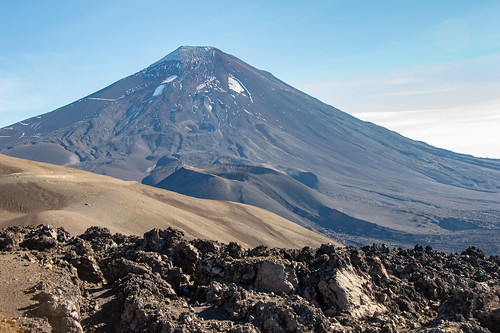One of our first proper outings, about a week after we arrived in Malalcahuello, was dedicated to climbing Volcán Lonquimay, whose majestic cone we can see from our cabin on a clear day.
 |
| Not the view from our cabin (we are a little further away) but another nice photo of the volcano |
The volcano is located within the
Reserva Nacional Malalcahuello and its last mayor activity cycle started on Christmas Day 1988, when a secondary cone ("Cono Navidad") and crater formed quite a way down on it's north-eastern flank. During the initial explosive phase, ash was ejected up to 9 km into the atmosphere, which later was linked to causing the death of livestock in the area due to it's high
Fluorine content. Thereafter, a slow-flowing stream of lava appeared that eventually, after 13 months, reached 10 kilometers in length, burying 200 hectares of
Araucaria and
Nothofagus forest and changing the course of the Lolco river.
 |
| View of Cono Navidad (centre-right) and the lava flow, photo taken from the top of Lonquimay |
There are at least
three different routes to climb the volcano, we opted for the south-eastern ridge, a fairly pleasant climb of about 1000 vertical metres with great views of the dozen or so other volcanoes in the region.
At the summit at 2865m, about 3 hours later, one is rewarded with another spectacular view into what is left of the 700m wide main crater. What incredible forces must have been at work to first form a mountain of this size and then blow its top off in a matter of hours or days!
 |
| View from the summit across the main crater |
More photos of this beautiful day in below slideshow (or
here for higher resolution):





No comments:
Post a Comment